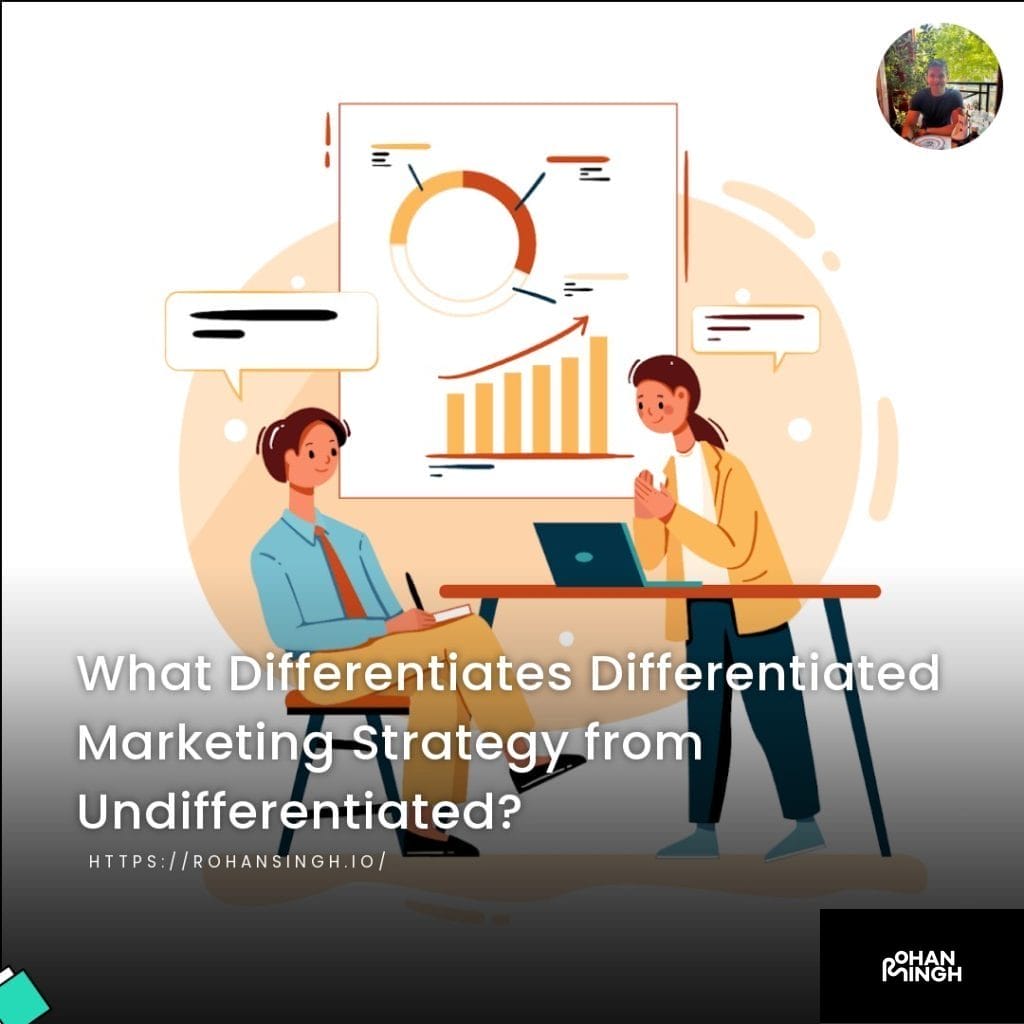Want to Dominate Google SERP? Learn How to Supercharge Your Content Strategy!

What is Google SERP?
Google SERP (Search Engine Results Page) refers to the page that displays the results of a user’s search query on Google. It is the gateway between users and the information they are seeking. The Google SERP features a variety of elements, including organic search results, featured snippets, knowledge panels, image packs, videos carousels, and more. Understanding how to optimize your content strategy for Google SERP features is crucial for increasing your visibility in search results and driving organic traffic to your website. By aligning your content with user search intent and leveraging relevant keywords, you can improve your chances of appearing in featured snippets, answer boxes, and other valuable SERP features.
Table of Contents
ToggleTo optimize your content strategy for Google SERP features, there are several key steps you should consider. Firstly, conduct thorough keyword research using tools such as Google Keyword Planner, SEMrush, or Moz to identify relevant keywords and search terms that your target audience is using. Build a list of target keywords and create keyword profiles that align with your content goals.
Secondly, focus on creating high-quality content that meets the needs of your target audience. Craft informative and engaging content that provides value and answers specific user queries. Emphasize relevant keywords throughout your content, but be sure to avoid keyword stuffing as it can negatively impact your SEO efforts.
Next, optimize your content to appear in featured snippets and other SERP features. Structure your content to fit the common types of featured snippets, such as numbered lists or bulleted lists, that Google tends to favor. Use schema markups and structured data markup to provide additional context and enhance the chances of securing a featured snippet.
Moreover, take advantage of Google My Business to improve your visibility in local search results and leverage the power of Google Maps. Optimize your website for mobile devices to cater to the increasing number of users conducting searches on smartphones. Enhance user experience by including internal links and clear navigation, and optimize meta descriptions to boost click-through rates.
Lastly, monitor your performance using tools like Google Search Console and Google Analytics. Analyze data, measure results, and make necessary adjustments to your SEO strategy to continually improve your visibility and drive traffic from Google SERP features. By following these steps and consistently creating relevant and high-quality content, you can optimize your content strategy for Google SERP features and increase your chances of ranking higher in search results.
Why Optimize Your Content Strategy for Google SERP Features?
Optimizing your content strategy for Google SERP features, such as featured snippets and knowledge panels, is crucial for businesses seeking to maximize their online visibility. Here’s why:
1. Increased Visibility:
By optimizing your content strategy for Google SERP features, you have the opportunity to appear prominently in search engine results. Featured snippets, for example, are positioned at the top of the page, giving your brand instant visibility above the competition. This increased visibility boosts your chances of attracting organic traffic and attracting potential customers.
2. Driving Traffic:
Appearing in Google SERP features means more visibility, which in turn leads to more website traffic. According to research, featured snippets alone can increase organic search traffic by up to 30%. By strategically optimizing your content to answer common user queries and utilizing relevant keywords, you can drive targeted traffic to your website and increase your conversion opportunities.
3. Conversions and ROI:
When your content appears in Google SERP features, users are more likely to perceive it as trustworthy and authoritative. This perception can significantly impact conversions and customer trust. In fact, websites that appear in featured snippets experience click-through rates nearly double that of regular organic search results. By focusing on optimizing your content strategy, you can generate higher conversion rates and achieve a higher return on investment.
To achieve these benefits, businesses should invest in comprehensive keyword research using tools like Google Keyword Planner, SEMrush, or Moz. By leveraging relevant keywords and crafting high-quality content that aligns with user search intent, you can optimize your content strategy for Google SERP features and gain a competitive edge in the digital landscape.
Let's talk about your future project!
Eager to collaborate on your upcoming endeavor? Let's explore and ignite the potential of your next big idea, shaping a promising future together!
Understanding Google SERP Features
Google SERP features are the various elements that appear on the search engine results page (SERP) to provide users with relevant information quickly. These features include featured snippets, knowledge panels, image packs, video carousels, and more. Optimizing your content strategy for these SERP features is essential to increase your visibility, drive traffic to your website, and ultimately improve conversions and ROI. In this article, we will explore different Google SERP features, their significance, and how to effectively optimize your content strategy to leverage these features and enhance your online presence. Let’s dive in.

Search Queries and Target Keywords
In order to optimize your content strategy for Google SERP features, it is crucial to understand the importance of search queries and target keywords. Search queries are the words or phrases that users type into search engines, while target keywords are the specific terms you want your content to rank for.
By effectively aligning your content with user intent, you can increase your visibility in search results. This means anticipating the search queries your target audience is likely to use and incorporating them into your content. Conducting keyword research using tools like Google Keyword Planner or SEMrush can help you identify relevant search queries and target keywords.
Common types of search queries include informational queries (e.g., “how to optimize content strategy”), navigational queries (e.g., “Google SERP features”), and transactional queries (e.g., “buy SEO tools”). To choose target keywords, you need to consider the search volume, competition, and relevance to your content. For example, if you are writing about “Google SERP optimization,” you may want to target keywords like “optimize content for Google SERP” or “increase visibility in search results.”
Once you have identified your target keywords, strategically optimize your content by including them in your titles, headings, meta descriptions, and throughout the body text. This will signal to search engines what your content is about and improve its chances of appearing in SERP features such as featured snippets or answer boxes.
Search queries and target keywords play a critical role in optimizing your content strategy for Google SERP features. By aligning your content with user intent and incorporating relevant keywords, you can increase your visibility in search results and achieve higher rankings in SERP features.
Knowledge Panel
When it comes to optimizing your content for Google SERP features, one important element to consider is the Knowledge Panel. Knowledge Panels are informative boxes that appear on the right-hand side of the search results page, displaying relevant information about a search query. These panels provide users with quick access to key details about a specific entity, such as a person, organization, or landmark.
The appearance of a Knowledge Panel is influenced by various factors, including existing databases like Wikipedia. Google algorithms gather information from these sources to populate the panel with accurate and comprehensive data. Therefore, it’s essential to ensure the information about your brand in these databases is up-to-date and well-curated.
To optimize your chances of appearing in a Knowledge Panel, you should focus on providing relevant and comprehensive information about your brand. Consider using structured data markup, specifically the schema.org organization markup, to help search engines understand and categorize your content accurately.
By optimizing your content for Google SERP features like Knowledge Panels, you can enhance your brand’s visibility and establish yourself as a trusted source of information for your target audience. Remember to incorporate the keyword “Google SERP optimization” strategically throughout your content to maximize its relevance and impact.
Answer Boxes/Quick Answers
Answer Boxes, also known as Quick Answers, are an important feature of Google SERP Optimization. They provide users with direct answers to their queries, displayed prominently at the top of the search results page. According to a study by Moz, Answer Boxes appear in around 19% of search queries.
These compact snippets of information can take different forms, including paragraphs, bulleted lists, or numbered lists. They often appear for questions that start with “how to,” “why,” or “what is.” Answer Boxes are highly sought after by content creators because they attract more clicks and increase visibility in search results.
To optimize for Answer Boxes, it’s crucial to focus on creating unique and informative content. Use semantic keywords related to the user query to increase the chances of your content being selected. Maintaining high-quality standards and staying topic-focused are also key factors for optimization.
To identify keywords that trigger Answer Boxes, you can utilize keyword research tools like SEMrush or Moz. Analyze competitor content that ranks for Answer Boxes to understand their strategies and learn from their success.
Optimizing content for Answer Boxes/Quick Answers is a valuable strategy for gaining visibility in search results and providing users with direct and concise answers. By following these tips and using the right tools, you can increase your chances of appearing in these prominent SERP features. Remember to prioritize unique and high-quality content to stand out from the competition.

Featured Snippets & Bulleted Lists
Featured snippets are compact snippets of information that appear at the top of Google’s search results page, providing quick and concise answers to user queries. They come in various formats, including paragraphs, bulleted lists, and tables, making it crucial for content creators to understand how to optimize their content to qualify for these featured snippets.
To optimize your content for a bulleted featured snippet, it is essential to format a chunk of text into bulleted lists. This helps Google understand the structure of your content and increases the chances of your content being selected for a bulleted snippet. Additionally, include your target keyword in a subheading, highlighting its relevance to the answer.
Using keyword research tools like SEMrush or Moz can help identify the target keywords and optimize your content accordingly. By analyzing competitor content that ranks for featured snippets, you can gain insights into their strategies and learn from their success.
Optimizing your content for bulleted featured snippets not only increases your visibility in search results but also attracts more clicks, driving organic traffic to your website. By providing concise, informative, and well-structured answers, you can position yourself as an expert in your field, enhancing your credibility and driving user engagement.
By understanding the different formats of featured snippets, such as paragraphs, bulleted lists, and tables, and optimizing your content through formatting and targeting keywords, you can increase your chances of appearing in these highly visible and valuable snippets.
Image Pack
Image Packs are a valuable SERP feature that can significantly enhance your content’s visibility in search results. Optimizing your content to appear in image packs can boost organic traffic to your website and increase brand exposure. Here are some best practices to optimize your content for image packs:
1. Optimize Images: Use high-quality, visually appealing images that are relevant to your content. Resize and compress images to ensure fast loading times, as page speed is a crucial factor for user experience and SEO.
2. Descriptive Alt Tags: Include descriptive alt tags for your images, using relevant keywords to provide context to search engines and visually impaired users. This helps search engines understand the image content and increases the chances of your image appearing in the image pack.
3. Image File Names: Use descriptive file names for your images instead of generic ones like “IMG12345.jpg.” Incorporate relevant keywords into the file name to improve its visibility in image search results and increase the likelihood of being included in the image pack.
4. Relevant Captions: Include informative and concise captions that accurately describe the image content. Captions add context to both users and search engines, improving the chances of your image appearing in the image pack.
To drive more traffic to your website and improve your visibility in image search results, direct users to the ‘Images’ search tab in Google. Additionally, ensure that the images you use are hosted on your website, as this increases the likelihood of directing users to your website when they click on the image in the image pack.
Incorporating these best practices into your content strategy will help optimize your content for image packs and increase your visibility in Google search results, ultimately driving more organic traffic to your website.
Video Carousels
Video Carousels are a powerful Google SERP feature that can significantly boost the visibility of video content in organic search results. These carousels showcase a collection of videos related to specific search queries and are prominently displayed at the top of the search results page.
The significance of Video Carousels cannot be overstated. According to a study by Moz, websites that have video content are 53 times more likely to appear on the first page of Google search results. This highlights the importance of incorporating video content in your overall content strategy for Google SERP Optimization.
Video Carousels offer a great opportunity to increase your website’s chances of appearing in a SERP snippet. When users click on a video within the carousel, they are directed to YouTube to watch the full video. This not only drives traffic to your YouTube channel but also increases the likelihood of users exploring other content on your website.
To optimize your content for Video Carousels, it is essential to focus on creating high-quality videos that are relevant to your target audience. Conduct keyword research and incorporate relevant keywords in your video titles, descriptions, and tags. Additionally, optimizing your YouTube channel with relevant keywords and engaging meta descriptions can further enhance the visibility of your videos in Google SERP features.
Leveraging Video Carousels is a highly effective strategy to enhance the visibility of your video content in organic search results. By optimizing your videos for Google SERP features and providing valuable, engaging content, you can increase your website’s chances of appearing in these carousels and capturing the attention of your target audience.

Real Estate & Maps
Google SERP Optimization is crucial for businesses in the real estate industry, and understanding how to optimize content for specific features like Real Estate & Maps can greatly improve visibility in search results.
The Real Estate & Maps section is designed to cater specifically to the needs of those searching for real estate-related information. This feature offers great opportunities for real estate businesses to showcase their listings and increase their visibility. It includes the Local Map Pack, which displays a map with relevant listings, making it easier for users to find properties in their desired location.
To optimize content for the Real Estate & Maps feature, it is important to focus on local SEO strategies. Utilize keyword research tools such as Google Keyword Planner or SEMrush to identify relevant keywords for the real estate industry, such as “real estate,” “maps,” “local map pack,” “local knowledge panel,” and “claim ownership.” Incorporate these keywords naturally in your website’s content, meta descriptions, and headings to improve relevancy and increase the chances of appearing in the Real Estate & Maps section.
Furthermore, claiming ownership of your Google My Business listing and optimizing it with accurate business information, attractive images, and engaging descriptions can help enhance your presence in the local map pack and local knowledge panel. Regularly updating this information and encouraging clients to leave positive reviews can also improve your credibility and increase visibility in Google SERP features.
By prioritizing optimization for Real Estate & Maps, real estate businesses can gain a competitive edge, attract more relevant traffic, and ultimately increase their chances of converting leads into clients. So, don’t miss out on the opportunities that Google SERP Optimization offers for the real estate industry.
Search Intent & High Quality Content
When it comes to optimizing your content strategy for Google SERP features, two key factors to focus on are addressing search intent and creating high-quality content.
Search intent refers to the reason behind a user’s search query. Understanding and meeting this intent is crucial for generating valuable traffic to your website. By aligning your content with the specific needs and goals of users, you can increase the chances of appearing in relevant SERP features.
Creating high-quality content is equally important. Google prioritizes displaying content that is informative, well-structured, and engaging. By producing detailed and relevant content, you can increase your chances of securing a spot in SERP features like featured snippets, knowledge panels, and answer boxes.
However, targeting specific keywords can be challenging when dealing with ambiguous search terms and fractured intent. Ambiguous terms, such as “real estate,” can have different meanings depending on the user’s intent. Fractured intent occurs when a user’s search query contains multiple intentions, making it difficult to determine the exact goal of the search.
To overcome these challenges, it is essential to categorize search intent into three types: know, do, and go. Know intent is for users seeking information or answers, do intent is for users looking to take specific actions or perform tasks, and go intent is for users searching for physical places or businesses. Anticipating these user needs and tailoring your content accordingly can help you optimize for Google SERP features effectively.
Remember, addressing search intent and creating high-quality content go hand in hand when it comes to Google SERP optimization. By focusing on user needs and providing valuable information, you can improve your visibility and drive traffic to your website.
Optimizing Content for Google SERP Features
Optimizing your content strategy for Google SERP features is crucial for boosting your visibility in search results and driving valuable traffic to your website. By aligning your content with the specific intent of users, producing high-quality and relevant content, and understanding the different types of search intent, you can increase your chances of appearing in SERP features like featured snippets, knowledge panels, and answer boxes. Additionally, utilizing keyword research tools and applications can help you identify relevant keywords and optimize your content accordingly. In this article, we will explore various strategies and techniques to optimize your content for Google SERP features, empowering you to reach your target audience and enhance your online presence. So let’s dive in and unlock the potential of Google SERP optimization.

Crafting Relevant, Engaging Titles and Meta Descriptions
Crafting relevant and engaging titles and meta descriptions is crucial when it comes to optimizing your content for Google SERP features. These elements play a significant role in attracting potential visitors to click on your website in search results.
Meta description tags provide a summary of the page’s content and often appear as snippets beneath the title in search results. They serve as a concise preview of what users can expect when they click on your page. By crafting compelling meta descriptions, you can entice users to click through to your website by clearly conveying the value and relevance of your content.
At the same time, it’s important to ensure that your titles are relevant and captivating. They should accurately represent the content of the page and grab users’ attention. Well-crafted titles can make a significant impact on click-through rates and ultimately improve your visibility in search results.
To optimize your content for Google SERP features, it is essential to include relevant titles and engaging descriptions that encourage users to click on your page. By doing so, you increase the likelihood of attracting a larger audience and ultimately driving more organic traffic to your website.
In order to effectively utilize the potential of meta description tags, relevant titles, and engaging descriptions, you can use various keyword research tools and applications to identify the most appropriate and high-performing keywords for your content. These tools can provide valuable insights into search queries, target keywords, and search intent, allowing you to optimize your content strategy accordingly.
Overall, crafting relevant, engaging titles and meta descriptions is a crucial aspect of Google SERP optimization. By focusing on these key elements, you can improve your visibility in search results and attract a more targeted audience to your website.
Utilizing Internal Links and External Sources
To optimize your content for Google SERP features, it is important to utilize internal links and external sources effectively. Internal links play a crucial role in improving your website’s visibility in search results. By strategically linking relevant pages within your website, you can enhance the overall site structure and make it more easily navigable for both users and search engines.
When creating internal links, use compact anchor text that accurately describes the content of the linked page. This will help search engines understand the relationship between your pages and improve their ability to crawl and index your website. It will also enable users to navigate through your site seamlessly, improving their overall experience.
Additionally, incorporating external sources in your content can add credibility and provide additional value to your readers. By linking to reputable external sources, you show that your content is well-researched and can be trusted. However, it’s important to ensure that the external sources you use are relevant and complement your own content.
Furthermore, to optimize your content for Google SERP features, ensure that your page titles and headings are informative, relevant, and concise. They should accurately reflect the content of the page and attract users’ attention. Clear and well-structured titles and headings not only improve your visibility in search results but also provide users with a better understanding of what they can expect from your content.
To optimize your content for Google SERP features, utilize internal links to enhance your site structure and improve navigation. Incorporate relevant external sources to add credibility to your content. And finally, create informative and concise page titles and headings that accurately represent your content. By following these best practices, you can optimize your content and improve its visibility in search results.
Creating Rich Snippets with Structured Data Markup
To optimize your content strategy for Google SERP features, one effective technique is to create rich snippets with structured data markup. Structured data markup is a way of organizing and labeling the content on your website to help search engines understand its context and meaning.
By implementing structured data markup, you provide search engines with additional information about your content, increasing the chances of appearing in various types of SERP features such as rich snippets. Rich snippets are enhanced search results that display additional information, making your content stand out to users and increasing visibility.
The benefits of using structured data markup are significant. It enables search engines to better understand the content on your website, ultimately improving its indexing and ranking. With structured data markup, your content can appear in knowledge panels, answer boxes, and other SERP features, increasing your online presence and driving more targeted traffic to your site.
To implement structured data markup, you can utilize tools and applications that generate the necessary code for your specific content. Google’s Structured Data Markup Helper and Schema.org are widely used resources that provide guidance and code examples. These tools make it easy to create rich snippets that enhance your search engine optimization efforts.
By incorporating structured data markup and creating rich snippets, you can optimize your content for Google SERP features, improving your search engine visibility and attracting more relevant traffic to your website.

Conclusion
Optimizing your content strategy for Google SERP features is a crucial step in gaining a competitive edge in today’s digital landscape. By aligning with Google’s intentions through strategic planning and website optimization, you can achieve meaningful results in terms of visibility, traffic, and user engagement.
The potential benefits of harnessing SERP features are vast and can positively impact various industries. For example, for e-commerce businesses, appearing in rich snippets can lead to higher click-through rates and increased conversions. Local businesses can benefit from optimizing for Google Maps to drive foot traffic and increase their visibility in search results. Content creators can leverage video carousels and featured snippets to showcase their expertise and reach a wider audience.
To achieve success with Google SERP optimization, it’s important to leverage keyword research tools to identify relevant keywords and optimize your content accordingly. Utilizing structured data markup tools and applications, such as Google’s Structured Data Markup Helper and Schema.org, can significantly enhance your content’s visibility and chances of appearing in SERP features.
In conclusion, optimizing your content strategy for Google SERP features is essential in today’s digital landscape. It not only improves your search engine optimization efforts but also provides a valuable opportunity to enhance user experience, increase visibility, and drive targeted traffic to your site. By staying informed about relevant trends and continuously refining your content strategy, you can stay ahead of the competition and reap the benefits of Google SERP optimization.
FAQ's
How can I optimize my content for Google SERP features?
To optimize your content for Google SERP features, start by conducting keyword research using tools like Google Keyword Planner or SEMrush. Identify relevant keywords and incorporate them naturally into your content. Additionally, create high-quality, informative content that directly answers users’ questions and aligns with search intent. Enhance your chances of appearing in featured snippets by structuring your content using numbered or bulleted lists, as well as heading tags (H1, H2, etc.). Utilize schema markups and structured data markup tools to provide more context to search engines.
What is the importance of related questions and the "People Also Ask" section?
Related questions and the “People Also Ask” section are essential for optimizing content for Google SERP features. These features provide additional exposure for your content by displaying relevant questions that users commonly search. By including related questions in your content and optimizing it to provide comprehensive answers, you increase your chances of appearing in featured snippets and attracting more organic traffic.
Should I add a Q&A section on my website?
Yes, adding a Q&A section on your website can be highly beneficial. It allows you to address specific queries from your target audience and provides an opportunity to optimize your content for relevant search terms. When optimizing your Q&A section, consider using long-tail keywords and relevant keywords that match users’ search queries. This increases the chances of your content appearing in featured snippets and attracting organic traffic.
How can I find featured snippet opportunities for my content?
To find featured snippet opportunities for your content, explore the “People Also Ask” section in Google’s search results. Analyze the questions and the type of content that appears in the snippets. Identify key topics related to your industry and create high-quality content that directly answers these questions. Optimize your content by using clear and concise language, structured formatting, and relevant keywords. This will increase your chances of appearing in featured snippets and driving more organic traffic to your website.
Similar articles about Acquisition Strategy:
Ready to Plan Your Dream Trip with ChatGPT Vacation Planner?, Want to Experience the Magic of Third-Party ChatGPT Plugins?, How can Efficient Project Management Boost Your Success?, Looking to Boost Your YouTube Views? Use ChatGPT for Top-Notch Video Optimization!
Are You Leveraging SEO Audits to Win More Clients?, Ever Thought of Starting an AI Career? Discover How Today!, Can SEO Propel Your Store to 1 Million Monthly Visitors?, How Can Google Bard Supercharge Your SEO Content Strategy?
Eager to Multiply Local Business Reviews from Travelers?, Which is the Best AI Chatbot? A Head-to-Head Comparison of ChatGPT, Claude 2, Bing Chat, and Google Bard, Want a Game-Changer in SEO? Have You Tried AI and Chrome Extensions Yet?,
Can AI-Powered Growth Spark Your Business Acceleration and Digital Transformation?, Ready to Achieve SEO Mastery and Stand Out in the Digital World?, Ready to Dominate the Future? How Can You Kickstart Your AI Data Science Career Today?, Want to Dominate Google SERP? Learn How to Supercharge Your Content Strategy!, Have You Explored the ChatGPT Android App Yet?
Ready to Supercharge Your Business? Harness the Power of Always-On PPC Strategy Now!
What Marketing Strategy Did Cheetos Employ for Plants vs. Zombies Collaboration?
Rohan Singh | May 1, 2024 | Acquisition What Marketing Strategy Did Cheetos Employ for Plants vs. Zombies Collaboration? Background on Cheetos Cheetos, a popular brand of cheese-flavored snacks, has made a name for itself with its bold and playful marketing strategies. Known for its irreverent and creative campaigns, Cheetos has consistently found unique ways […]
What Marketing Strategy Did Cheetos Employ for Plants vs. Zombies Collaboration?
Rohan Singh | May 1, 2024 | Acquisition What Marketing Strategy Did Cheetos Employ for Plants vs. Zombies Collaboration? Background on Cheetos Cheetos, a popular brand of cheese-flavored snacks, has made a name for itself with its bold and playful marketing strategies. Known for its irreverent and creative campaigns, Cheetos has consistently found unique ways […]
What Differentiates Differentiated Marketing Strategy from Undifferentiated?
Rohan Singh | April 30, 2024 | Acquisition What Differentiates Differentiated Marketing Strategy from Undifferentiated? Definition of Differentiated Marketing Strategy A differentiated marketing strategy is a targeted approach that focuses on creating unique products or services to meet the specific needs and preferences of different customer segments. It recognizes that customers have diverse tastes, preferences, […]
What Sets Apart the Marketing Concept from a Marketing Strategy?
Rohan Singh | April 29, 2024 | Acquisition What Sets Apart the Marketing Concept from a Marketing Strategy? Definition of Marketing Concept The marketing concept is a philosophy that places the customer at the center of all marketing activities. It focuses on understanding the needs and wants of the target market and delivering value to […]
Which promotional mix strategy targets market channel members?
Rohan Singh | April 28, 2024 | Acquisition Which promotional mix strategy targets market channel members? When it comes to promoting a product or service, companies utilize various strategies to reach their target audiences. One key strategy that directs marketing efforts toward market channel members is known as trade promotion. Trade promotion is a type […]
Should charter schools adopt regional or national marketing strategies?
Rohan Singh | April 27, 2024 | Acquisition Should charter schools adopt regional or national marketing strategies? Purpose When it comes to marketing strategy in the field of charter schools, two broad approaches can be taken: regional and national. Each approach has its purpose and benefits depending on the goals and aspirations of the charter […]
Share :






